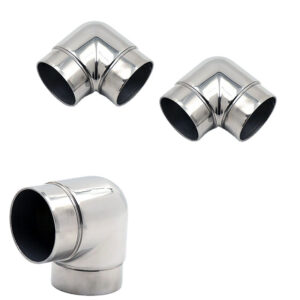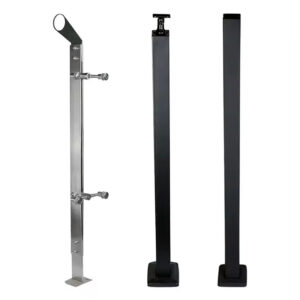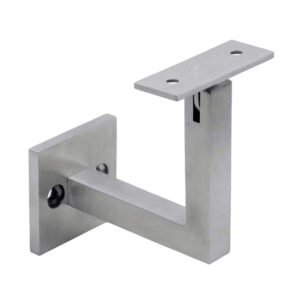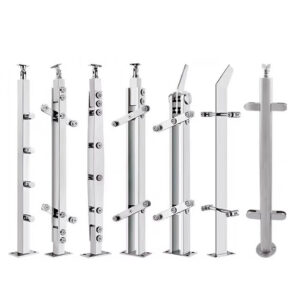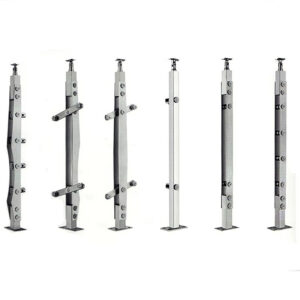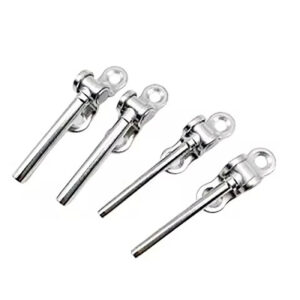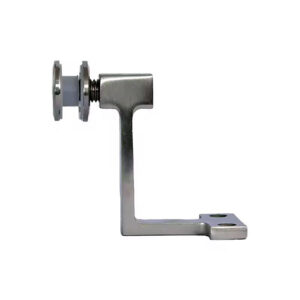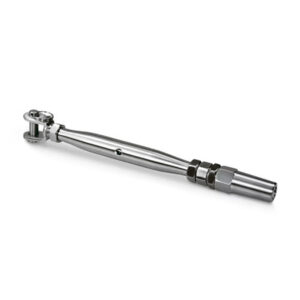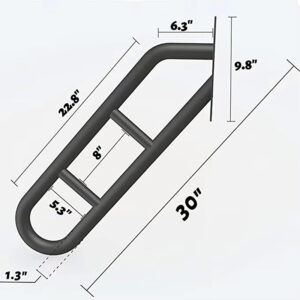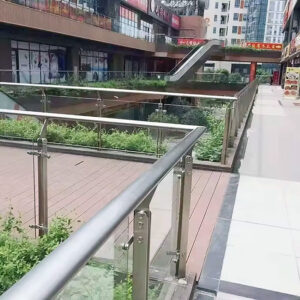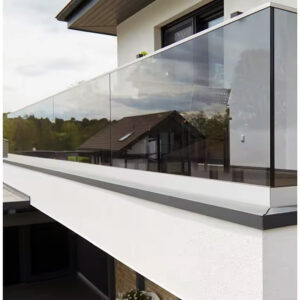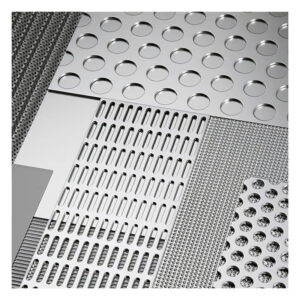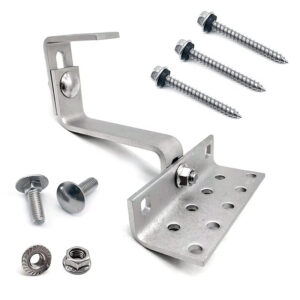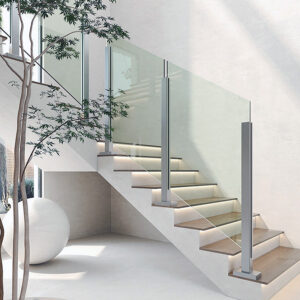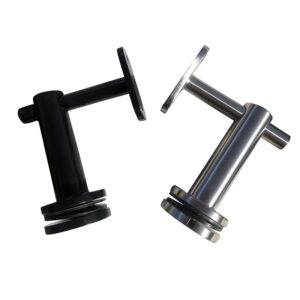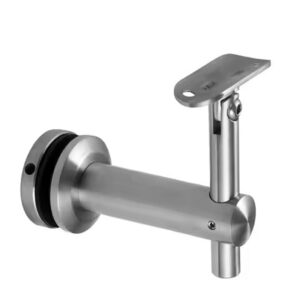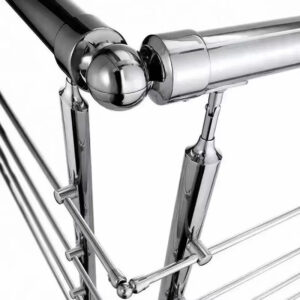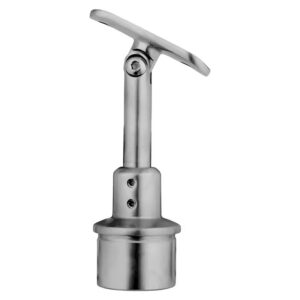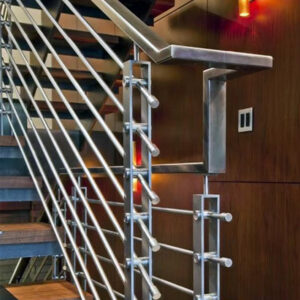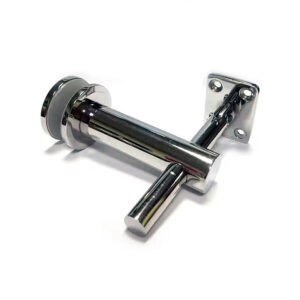Finding anchor bolts that actually hold under real-world conditions shouldn’t be complicated. After 23 years manufacturing stainless steel hardware, we’ve seen too many projects delayed by inadequate anchoring systems and bolts that fail basic load requirements. Heavy duty anchor bolts form the critical foundation of any railing system—when they work correctly, everything else falls into place. When they don’t, you’re looking at callbacks, safety issues, and reputation damage. Here’s what actually works in the field.
Core Heavy Duty Anchor Bolt Systems
Post Mounting Anchor Solutions
Heavy duty anchor bolts for railing posts require precise load distribution and corrosion resistance that standard hardware can’t deliver. Our post mounting systems use 316L stainless construction with ASTM A193 grade specifications, providing 75,000 PSI minimum tensile strength for commercial applications.
Surface Mount Anchor Bolts: M12-M20 diameter range with 80-200mm embedment depths. These handle vertical loads up to 15kN and lateral forces to 8kN—sufficient for most commercial railing posts. The hex head design allows standard tool installation while maintaining flush surface profiles.
Through-Base Anchor Systems: For high-load applications where standard surface mounts reach capacity limits. These industrial anchor bolt systems utilize threaded rod connections with backing plates, distributing loads across larger concrete areas. Common in manufacturing facilities and infrastructure projects requiring enhanced safety margins.
Marine Grade Heavy Duty Anchors
Coastal and marine environments demand heavy duty anchor fabrication 316L grade materials. Standard 304 stainless shows pitting corrosion within 18 months in salt spray conditions, while 316L maintains structural integrity beyond 15 years in identical environments.
Corrosion Performance Data:
| Environment | 304 Stainless | 316L Stainless | Carbon Steel |
|---|---|---|---|
| Indoor/Dry | 15+ years | 20+ years | 2-5 years |
| Coastal/Salt Air | 12-18 months | 15+ years | 6-12 months |
| Direct Marine | Not recommended | 12+ years | 3-6 months |
| Chemical/Industrial | Variable | 8-15 years | 6 months |
Custom Anchor Manufacturing Capabilities
Standard anchor bolts cover 80% of railing applications, but complex projects need engineered solutions. Our custom anchor manufacturing handles unique load requirements, non-standard embedment depths, and specialized material needs. Esang Metal leverages 23 years of fabrication experience to solve anchoring challenges that standard catalogs can’t address.
Custom Solutions Include:
- Extended length bolts for deep embedment applications
- Special head configurations for tight clearance installations
- Mixed material grades for specific corrosion environments
- Load-tested assemblies for critical safety applications
▶ Get Technical Specifications ◀
Installation Performance Specifications
Load Capacity by Application
| Anchor Type | Diameter | Embedment | Tensile Load | Shear Load | Typical Use |
|---|---|---|---|---|---|
| Standard Surface | M12 | 80mm | 12kN | 8kN | Residential rails |
| Heavy Duty Surface | M16 | 120mm | 20kN | 12kN | Commercial posts |
| Through-Base | M20 | 160mm | 35kN | 18kN | Industrial systems |
| Marine Grade | M16 | 120mm | 20kN | 12kN | Coastal installations |
Material Selection Guide
304 Stainless: Indoor commercial applications, dry environments, standard corrosion resistance. Cost-effective for controlled conditions with 10+ year service life expectations.
316L Stainless: Marine environments, chemical exposure areas, coastal installations, food processing facilities. Higher initial cost offset by 15+ year service life and reduced maintenance.
Hot-Dip Galvanized: Budget-conscious projects in moderate environments. Requires regular inspection and coating maintenance but provides acceptable 5-8 year performance at lower cost.
Real-World Application Results
Commercial Heavy Duty Bolt Hardware Projects
Multi-Unit Housing Complex – Portland, Oregon: 240-unit development used M16 heavy duty anchor bolts for balcony railings. Installation teams reported 30% faster mounting compared to previous projects using mixed hardware. After 3 years, zero anchor-related maintenance calls versus 12% callback rate from comparable project using standard bolts.
“Standardized heavy duty anchors eliminated field modifications and reduced installation time significantly.” —Pacific Northwest Contractors Association
Manufacturing Facility – Houston, Texas: Chemical processing plant required industrial anchor bolt systems ODM solution for elevated walkway railings. Custom 316L anchors with extended embedment handled 25kN lateral loads from thermal expansion. Five years later, zero corrosion issues despite aggressive chemical environment.
Marine Grade Applications
Marina Dock System – San Diego, California: 2,400 linear feet of railing using marine grade heavy duty anchors in direct salt spray environment. 316L stainless anchors showed minimal corrosion after 4 years versus 18-month replacement cycle of previous carbon steel hardware.
Coastal Boardwalk – New Jersey: Public walkway project used heavy duty anchor fabrication 316L for hurricane resistance. Anchors survived Category 2 storm conditions with no structural damage, while adjacent sections with standard hardware required post-storm repairs.
▶ Discuss Your Project Requirements ◀
Installation Time and Cost Analysis
| Project Type | Standard Anchors | Heavy Duty System | Time Savings | Cost Impact |
|---|---|---|---|---|
| Residential Deck | 2.5 hours | 1.8 hours | 28% | +15% material, -20% labor |
| Commercial Rail | 6 hours | 4.2 hours | 30% | +25% material, -25% labor |
| Industrial System | 12 hours | 8.5 hours | 29% | +35% material, -30% labor |
| Marine Installation | 8 hours | 5.5 hours | 31% | +40% material, -35% labor |
Professional Installation Support
System Integration Advantages
Modular heavy duty anchor bolt systems integrate with standardized post bases and mounting hardware. This reduces field measurement errors and eliminates custom drilling operations that slow installations. Our anchor systems work with 90% of commercial railing posts using standard connection patterns.
Pre-Installation Planning: Technical drawings and load calculations help contractors plan anchor placement before concrete work begins. This prevents costly corrections and ensures proper embedment depths for code compliance.
Quality Control Process: Each batch of heavy duty anchor bolts receives tensile testing and material certification. Documentation includes heat lot numbers, test results, and compliance certificates for inspection requirements.
Field Support Services
Installation questions arise on every project. Our technical team provides real-time support based on 23 years of manufacturing experience. Common support requests include load calculations for unusual applications, material selection for specific environments, and troubleshooting installation challenges.
▶ Connect with Technical Support ◀
Frequently Asked Questions
Q: How do I select between 304 and 316L stainless for anchor bolts?
A: Use 304 stainless for indoor applications and dry outdoor environments where cost matters. Choose 316L for coastal areas within 5 miles of saltwater, chemical environments, or where 15+ year service life justifies higher initial cost. Industrial facilities typically specify 316L for reduced maintenance schedules.
Q: What embedment depth do heavy duty anchor bolts require?
A: Minimum embedment equals 8 times bolt diameter in 3,000 PSI concrete. M16 bolts need 128mm minimum, though 150mm provides better safety margins. Poor concrete conditions may require deeper embedment or larger diameter bolts for equivalent holding power.
Q: Can heavy duty anchor bolts work with existing railing posts?
A: Most commercial posts use standard bolt patterns compatible with our anchor systems. Measure existing hole spacing and post base dimensions before ordering. Custom anchor manufacturing handles non-standard configurations when needed.
Q: What’s the typical service life for marine grade anchors?
A: Marine grade heavy duty anchors using 316L stainless typically provide 12-15 years in direct salt spray environment. Sheltered coastal locations often see 20+ year service life. Regular inspection every 2-3 years identifies any issues before structural problems develop.
Q: How do installation costs compare with standard anchor bolts?
A: Heavy duty anchor bolts cost 25-40% more than standard hardware but reduce installation time by 28-31% through simplified mounting procedures. Total installed cost usually breaks even while providing superior long-term performance and reduced maintenance requirements.
Q: What documentation comes with commercial anchor bolt orders?
A: Each shipment includes material certifications, tensile test results, installation specifications, and load calculation worksheets. This documentation supports building inspections and provides liability protection for contractors and installers.
Market Comparison and Selection Criteria
Competitive Analysis
| Feature | Economy Anchors | Standard Commercial | Heavy Duty Systems | Premium Marine |
|---|---|---|---|---|
| Material Grade | Carbon Steel | 304 Stainless | 316 Stainless | 316L Special |
| Load Rating | 8-12kN | 12-18kN | 18-35kN | 20-40kN |
| Service Life | 2-5 years | 8-12 years | 12-18 years | 15-25 years |
| Environment | Indoor only | General commercial | Industrial/Coastal | Marine/Chemical |
| Cost Index | 1.0x | 1.8x | 2.5x | 3.2x |
Selection Guidelines
Budget-Conscious Projects: Standard commercial anchors work for general applications with 8-12 year replacement cycles. Acceptable for projects where initial cost outweighs long-term maintenance considerations.
Performance-Critical Applications: Heavy duty anchor bolt systems provide enhanced safety margins and extended service life. Recommended for commercial buildings, multi-unit housing, and public access areas where reliability matters more than initial cost.
Harsh Environment Projects: Marine grade and industrial applications require 316L materials regardless of cost. Failure consequences exceed any material savings, making heavy duty systems the only practical choice.
▶ Get Project-Specific Recommendations ◀
The anchor bolt foundation determines railing system success or failure. Twenty-three years of manufacturing experience shows that investing in proper heavy duty anchor bolts eliminates most field problems and reduces total project costs through faster installation and longer service life. Whether you need standard commercial hardware or custom solutions for challenging environments, the right anchor system makes everything else work better.
